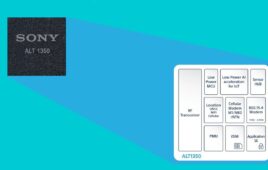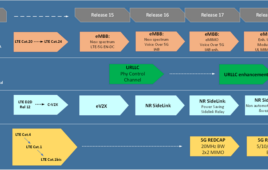The creative/engineering/business teams at Cricket Communications believe they’ve built a better mobile music service than anyone else, and they’re sharing some numbers to back up their claims, as well as adding the first Android device to the Muve Music line.
Cricket’s Muve Music service has surpassed the 200,000 customer mark – doubling its subscriber base in just two months, making it among the fastest growing music services in the United States, according to the carrier. That may seem even more significant given that the Muve service so far has been available on only one Cricket feature phone device, the Samsung Suede. That will change later this month when it adds the Android-based Samsung Vitality.
According to Nielsen, Muve in the month of July accounted for 70 percent of tethered streams, or mobile plays, for the top 10,000 most-streamed songs. Nielsen also found that Muve accounted for 8 percent of all streams that Nielsen captured in the U.S., which includes most major PC and mobile streaming services.
 Jeff Toig, Cricket’s general manager of Muve Music, says none of this is by accident. Cricket started working on its music service several years ago, aligning itself with the music industry. “If you want to do it right, you have to put a lot of thought into doing it right,” he says. “We’ve thought about all the components” and assembled a team of people that included experts in digital music, the labels and Cricket’s own engineers to figure out the most efficient means of delivery. Meanwhile, Cricket tapped its business development side and found legal expertise to navigate the digital music waters.
Jeff Toig, Cricket’s general manager of Muve Music, says none of this is by accident. Cricket started working on its music service several years ago, aligning itself with the music industry. “If you want to do it right, you have to put a lot of thought into doing it right,” he says. “We’ve thought about all the components” and assembled a team of people that included experts in digital music, the labels and Cricket’s own engineers to figure out the most efficient means of delivery. Meanwhile, Cricket tapped its business development side and found legal expertise to navigate the digital music waters.
The idea of mobile music is nothing new. Carriers for years have been trying to get customers to ditch their MP3 players and use their cell phones as their primary music device. But Toig says a lot of those efforts just didn’t pan out because the solutions were designed first with the desktop computer in mind and ported over to mobile. Cricket’s service is developed from the ground up with the mobile phone in mind. A dedicated button on the Samsung Suede links customers directly to their music.
Cricket’s second phone for Muve, the aforementioned Samsung Vitality, is based on Android 2.3. It has a suggested retail price of $219.99 and is available now for $199.99 with a $20 instant rebate; it works with a $65 rate plan that includes full-song downloads, ringtones, ringback tones, nationwide calling, nationwide text, picture and video messaging, email and data back-up. The $55 Muve rate plan still will be offered for the Suede feature phone.
The Vitality comes preloaded with a 4GB SanDisk flash memory card, which holds up to 3,000 songs and has 1GB set aside for other multimedia content. An 8GB Muve Music memory card is available for purchase and holds up to 6,000 songs.
Last month, Engadget reported on the Vitality’s impending arrival, noting its similarity to the Samsung Admire offered by MetroPCS Communications – sans the Muve connection.
Cricket launched Muve in one market in January and eventually rolled it out to all Cricket markets, or about one-third of the U.S. In August, rival MetroPCS announced a $60 rate plan with Rhapsody Unlimited Music, which involves downloading an app to an Android device.
Toig says Cricket is flattered the marketplace is realizing that Muve is having an impact and others are looking to emulate that. But there are profound differences in the way the services are implemented, he says, adding that Muve is a more complete mobile music product than Rhapsody. He says Rhapsody is a great service but built for the computer and ported to the phone as an app.
In addition, Muve is pre-provisioned, and users get it out of the box. Muve download times are “very fast,” he says, adding that tracks are available on the phone regardless of whether a user is within coverage of the network. Cricket deliberately chose the download model versus streaming because the customer experience is better and from a carrier standpoint, it’s more efficient on network resources.
Cricket pays the music industry a fixed amount per subscriber, and the artists receive a cut based on the number of downloads their music gets. It’s structured such that “we don’t have an economic disincentive, our goal is to have them use it a lot,” Toig says. The company sees the service as one that will attract customers it otherwise would not have been able to get, generating net adds, stabilizing or raising ARPU, improving churn and delivering rich content at a lower cost.
Cricket says Muve customers average 2 to 3 hours a day listening on their phone and they download 400 songs a month. Most of its customers won’t buy digital music the way it’s sold via credit card as they tend not to have a credit card.
According to a spokesperson, users can’t keep their music indefinitely if they temporarily leave Cricket. The music library is tied to the user’s phone number. When customers don’t pay their bill, they have about 30 days before they lose that phone number. Once they lose that number, Cricket no longer has the tracking mechanism needed to recall the user’s music library.
Muve features artists from 55 record labels, including those owned by Universal Music Group, Warner Music Group, Sony Music Entertainment and EMI Music. Cricket worked first with Samsung on Muve-optimized handsets, but expect more from other OEMs by the holidays. Cricket is expected to launch Muve nationwide in national retail later this year.




